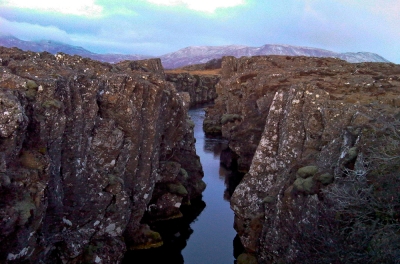
A mid-ocean ridge or mid-oceanic ridge is an underwater mountain range, formed by plate tectonics.
This uplifting of the ocean floor occurs when convection currents rise in the mantle beneath the oceanic crust and create magma where two tectonic plates meet at a divergent boundary.
The mid-ocean ridges of the world are connected and form a single global mid-oceanic ridge system that is part of every ocean, making the mid-oceanic ridge system the longest mountain range in the world, with a total length of about 60,000 km.
There are two processes, ridge-push and slab-pull, thought to be responsible for the spreading seen at mid-ocean ridges, and there is some uncertainty as to which is dominant.
Ridge-push occurs when the weight of the ridge pushes the rest of the tectonic plate away from the ridge, often towards a subduction zone.
At the subduction zone, “slab-pull” comes into effect.
This is simply the weight of the tectonic plate being subducted (pulled) below the overlying plate dragging the rest of the plate along behind it.
The other process proposed to contribute to the formation of new oceanic crust at mid-ocean ridges is the “mantle conveyor”.
Picture Credit : Google
